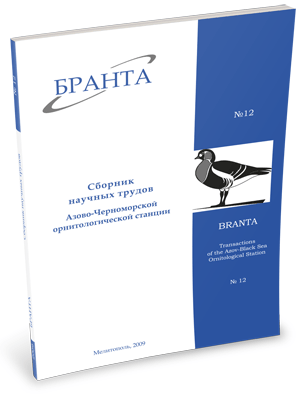
Transactions
of the Azov-Black Sea Ornithological Station



Structure, number and spatial habitat distribution of summer aviafauna in the central-foothills area of Daghestan
Vilkov E.V.
The work summarizes information, received (including data of inquiries) in two foothill districts of the centralfoothill area of Daghestan – Sergokalinski (23-28.062003) and Kayakentski (09-12.06.2008) (fig.1).
For the first time there are described features of spatial habitat distribution of summer avifauna in key habitats of the Daghestan foothills. The paper includes the inventory list of birds of 82 taxa (Table 1), indication of status of their stay, preferred habitats, population density and conservation status. Because of the considerable habitat diversity, entailing unequal mosaic distribution of fauna, we distinguished 9 ornithocomplexes (fig.2.) which correspond to common types of landscapes. It was found out that the avifauna of the central-foothills area of Daghestan is developed mainly at the expense of 3 sources of faunistic diversity: 1- widely distributed species of the lowland; 2 – typical mountain fauna and 3 – visitor species penetrating to the foothills from intra-rocky parts and lowlands of Daghestan.
The research showed that neighboring lowlands undergo a permanent impact of the largest migration flyway in Russia, called the Western Siberian-Caspian-Nile flyway. This migratory route follows along the western coast of the Caspian Sea and includes 168 regular migrants (Vilkov 2006). This is the reason to suggest that the dynamics of avifauna composition in the foothills can also vary, depending on dynamics of fauna composition of migrant groups arriving from vast Palearctic area.
Read the paper in a PDF file